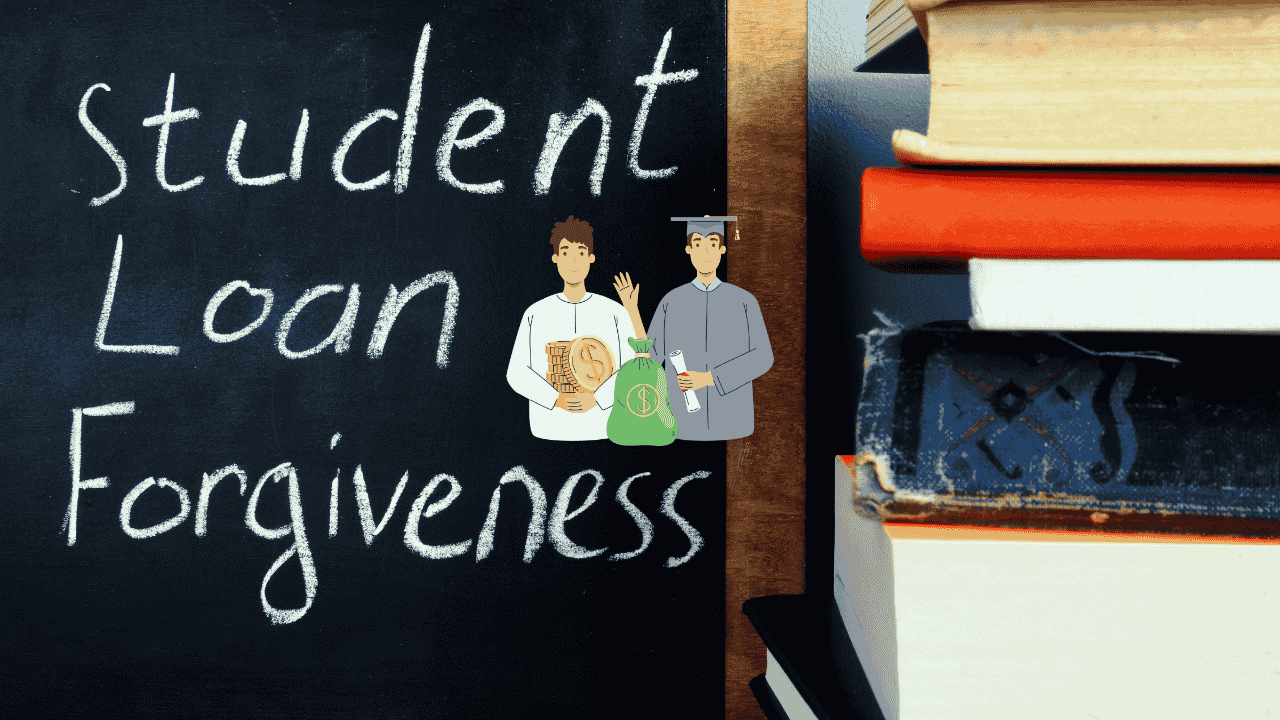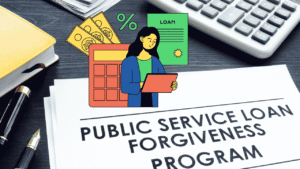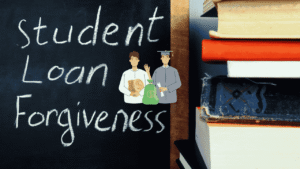|

Reviewd by: Dileep K Nair
Senior Editor & Expert Reviewer
The Public Service Loan Forgiveness program has long been a lifeline for teachers, nurses, nonprofit staff and government employees who commit to public service careers despite lower paychecks. Since its creation in 2007, PSLF has offered the promise of full debt cancellation after ten years of qualifying payments, giving borrowers in essential but modestly paid fields a way to manage their student debt.
Key Takeaways
- The Trump administration’s proposal seeks to tighten PSLF eligibility rules, including stricter employer definitions, annual certifications, and potential loan caps.
- Advocates warn the changes could jeopardize forgiveness for teachers, healthcare workers and nonprofit staff who have already built careers around the program.
- The rulemaking process is still ongoing, with public comments and possible legal challenges expected before any final rule takes effect in 2025.
- Beyond cost savings, the plan raises concerns about public service retention, potentially deepening shortages in education, healthcare and community sectors.
But the program has also been plagued with confusion, mismanagement and misuse. Early reviews by the Government Accountability Office showed denial rates exceeding 90 percent, often because borrowers did not know their loans or employers failed to meet the fine print of eligibility. That history of dysfunction has left PSLF both politically vulnerable and administratively fragile.
The Trump administration’s proposed revisions sharpen those vulnerabilities. Officials have framed the changes as an effort to “protect taxpayers and ensure fairness” by narrowing eligibility, tightening payment verification and reclassifying certain loans. Critics, however, warn that the rules could gut the spirit of PSLF by excluding thousands of borrowers who entered public service careers with the expectation of eventual relief.
For borrowers already deep into the program, the stakes are personal. A teacher in her ninth year of repayment could suddenly discover her district no longer qualifies. A nonprofit worker may learn that an employer’s certification was never properly registered. These risks explain why the proposal has drawn immediate attention, not only in Washington policy circles but also in households where PSLF has been the financial backbone of a career choice.
Table of Contents
Key 6 Proposed Changes You Should Know
1. Employer Eligibility
The proposal aims to disqualify employers engaged in “substantial illegal activities,” such as aiding immigration law violations, providing gender-affirming care to minors, supporting foreign terrorism, violating federal discrimination laws, or engaging in violence to influence federal policy. The Education Secretary would determine eligibility, with appeals possible but a 10-year ban for disqualified employers.
2. Non-Retroactive Application
The changes would not apply retroactively, meaning past qualifying payments remain valid, but future eligibility could be affected if an employer is deemed ineligible after the rule’s effective date.
3. Repayment Plan Consolidation
Under the One Big Beautiful Bill Act (OBBB), repayment options are consolidated to Standard and Repayment Assistance Plan (RAP), with PSLF allowing payments under RAP to qualify for the 10-year forgiveness timeline.
4. Borrowing Limits
The OBBB Act sets a lifetime borrowing limit of $257,500 for combined undergraduate and graduate loans, potentially limiting access for high-cost programs but not directly capping forgivable amounts under PSLF.
5. Annual Recertification
Borrowers may need to recertify income and employment annually to maintain eligibility under the new plans.
6. Verification and Appeals
Employers can appeal disqualifications, and corrective action plans may allow reinstatement, but borrowers cannot request reconsideration of decisions.
Why the Administration Pushes These Changes
The Trump administration has presented its case for tightening the Public Service Loan Forgiveness program in the language of fiscal prudence and fairness. Officials argue that without stricter guardrails, PSLF risks becoming a “blank check” for borrowers who may not have intended careers in public service but instead leveraged loopholes to secure eventual forgiveness. The Department of Education has pointed to cases where borrowers with high graduate school debts structured repayment plans around PSLF, raising questions about whether the program’s benefits align with taxpayer intent.
There is also a historical context that has shaped this proposal. Reports from the Government Accountability Office and Congressional hearings have flagged irregularities in the program, ranging from employers misclassified as qualifying to borrowers misunderstanding rules about loan types. Critics of the program have seized on these issues as evidence of systemic misuse, even if many cases stemmed from administrative complexity rather than deliberate abuse.
From a budgetary perspective, curbing PSLF’s growth is also part of the rationale. The Congressional Budget Office has estimated that federal student loan forgiveness programs represent a significant long term liability. By narrowing eligibility and capping forgiveness amounts, the administration projects savings that could reduce the overall fiscal burden. Officials maintain that the intent is not to dismantle PSLF but to ensure it operates with integrity, focusing its benefits on “true public servants” while safeguarding public funds.
Who Stands to Be Most Affected
If adopted, the proposed PSLF changes would reshape the program’s reach and not all borrowers would feel the impact equally. For new entrants to public service like teachers, government workers and nonprofit staff, the uncertainty may be most daunting. Many begin careers with modest salaries, relying on the promise of PSLF as part of their long term financial plan. A narrower employer list or tighter certification rules could leave them questioning whether the program remains a viable safety net.
Those already deep into repayment may face even sharper consequences. Borrowers approaching their 10 year mark, some with nearly a decade of payments recorded, could find that technicalities derail forgiveness. A local nonprofit might not make the registry or a missing annual certification could invalidate years of contributions. For individuals who structured careers, housing and family budgets around PSLF, such disruptions could be financially devastating.
Healthcare professionals, public interest lawyers and social workers with large graduate debts stand to lose the most if forgiveness caps are imposed. Their higher balances make them especially vulnerable to any ceiling on eligible forgiveness amounts. Meanwhile, payroll officers and financial advisors who guide employees through compliance would shoulder new responsibilities, ensuring annual certifications are filed correctly to avoid disqualification.
In my experience, we see the net effect of the proposed changes is a heavier compliance burden and greater risk for borrowers who once believed PSLF was a guaranteed pathway to debt relief. For many borrowers, the proposed rules transform the program from a promise into a gamble.
Expert Perspectives & Advocacy Reactions
The proposed limits on PSLF have stirred sharp debate among borrower advocates, public service organizations and policy analysts. Reform groups argue that sudden changes risk undermining the very premise of the program: attracting and retaining skilled workers in critical public sectors. The Student Borrower Protection Center warned that narrowing employer eligibility or capping forgiveness would “punish borrowers who relied on the government’s promise of relief” after years of service, emphasizing the retroactive impact such moves could have.
Financial aid administrators and nonprofit leaders have voiced concern that stricter oversight, while necessary to prevent abuse, may deter young professionals from entering public service careers already strained by low pay. A report from Inside Higher Ed noted that administrators are bracing for increased compliance costs and confusion among borrowers if annual certification rules become mandatory.
Education economists remain divided. Some argue that tighter rules will save taxpayer dollars and restore accountability. Others caution that the fiscal savings could be outweighed by long-term social costs, particularly if fewer graduates pursue careers in education, healthcare, or public defense. The Brookings Institution has repeatedly stressed that public service loan forgiveness, while costly, plays an essential role in stabilizing workforce pipelines in areas of chronic shortage.
We see the range of reactions underscores the tension between fiscal restraint and social investment, two priorities that rarely align neatly when it comes to higher education finance.
How to Protect Your Eligibility: Action Steps
For borrowers currently pursuing PSLF, experts stress the importance of documentation and proactive verification. The Department of Education advises that employees should regularly confirm their employer’s status through the official PSLF Help Tool, which provides an up to date registry of eligible organizations.
Borrowers should also maintain detailed records of their monthly payments. Tighter scrutiny under the proposed rules could mean that missing or misclassified payments may no longer be credited toward the 120 payment threshold. Consolidating older loan types into Direct Loans, if not already done, is another step to ensure continued eligibility, as only certain federal loans qualify for PSLF.
Annual verification could become mandatory if the changes are enacted, so preparing in advance by gathering employment certification forms each year may reduce the compliance burden later. Financial aid experts also suggest keeping communication lines open with servicers and double checking payment histories to avoid future disputes.
We at GlimMarket editorial observe that, while the final form of the regulations is still pending, borrowers who act now to tighten their paperwork and confirm their employer’s eligibility will be in a stronger position to weather policy shifts.
Timeline and Rulemaking Process
The proposed changes to PSLF are moving through the federal rulemaking process, which means nothing is final yet. The Department of Education published the draft framework earlier this summer, triggering a formal public comment period where advocacy groups, borrowers and institutions can submit feedback. Typically, such comment windows last 60 to 90 days before the Department reviews responses and issues a final rule.
A key question is whether the new restrictions would apply retroactively to borrowers already on track for forgiveness or whether they would only affect new enrollees. Borrower advocates are urging that changes not be applied to those with years of qualifying payments, warning that retroactive enforcement would undermine trust in federal loan programs.
Broader Implications for Public Service Retention
Beyond individual borrowers, the proposed PSLF restrictions raise broader concerns about public service workforce stability. For teachers, social workers and public interest lawyers, student loan forgiveness is often a critical factor in choosing lower paid but socially vital careers. A recent report by The Century Foundation highlighted that more than half of borrowers working in education or healthcare cited PSLF as a reason for entering their field.
If access to forgiveness becomes narrower or more uncertain, fewer graduates may be willing to accept public service roles, potentially worsening shortages in classrooms, hospitals and community agencies. State governments may need to step in with supplemental loan repayment programs, as several already do for rural doctors or STEM educators, to offset federal cutbacks.
The long term social costs are harder to measure but potentially significant. Reduced participation in PSLF could limit diversity in critical professions, with low income and first generation college graduates most likely to be deterred. It could also increase turnover, as employees facing high debt burdens leave public service for better paying private sector work.
From a GlimMarket perspective, the policy debate therefore extends beyond cost savings. It touches on the country’s ability to sustain essential public services in education, healthcare and law, areas already under strain from underfunding and staffing gaps.
This article draws on verified reporting from reputable news outlets, trade data and expert commentary. GlimMarket maintains strict editorial independence and does not accept influence from advertisers or political groups in shaping coverage. We have already provided necessary attributions within the article itself, The analysis provided reflects reporting and expert opinions at the time of publication. It is intended for informational purposes only and should not be considered financial advice.
In our commitment to ensuring accuracy and credibility, we prioritize the use of primary sources to support our reporting. This includes white papers, government data, original reporting, and interviews with industry experts. We also reference original research and findings from reputable publishers when appropriate. We always ensure that proper attributions and citations are provided with source links, within the article itself, to uphold transparency and fair practice. To learn more about the standards we uphold in producing accurate and unbiased content, please refer to our Editorial Policy & Guidelines.
About the Authors

Archana N
Senior Writer & Content Strategist
Archana N is a seasoned content strategist and senior writer with over 12 years of experience…

GlimMarket Editorial
Editors, Writers, and Reviewers
The GlimMarket Editorial Team is responsible for developing and maintaining the…

Dileep K Nair CMA (US)
Senior Editor & Expert Reviewer
Dileep K Nair is a Certified Management Accountant (CMA) from IMA, USA and brings…
Related Articles

US–EU Trade Deal Brings 15% Tariff on Imports: What It Means for Businesses, Consumers, and Investors

Historic US–EU Trade Deal Slaps 15% Tariff on EU Imports: Who Wins and Who Loses?

India, UK Sign Landmark Free Trade Agreement: 99% Tariff Free Access, Visa Boost, $34 Billion Trade Surge Expected

Fed Governor Waller Pushes for July Rate Cut Amid Internal FOMC Split
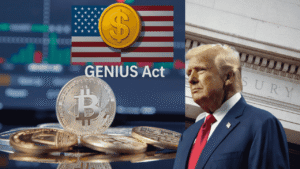
Trump Signs GENIUS Act Into Law, Setting First Federal Stablecoin Rules
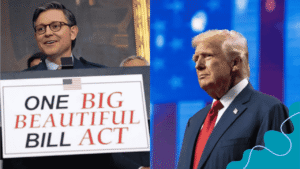
Trump Signs One Big Beautiful Bill into Law: Here’s Why It Matters You
Say Goodbye to Bookkeeping Headaches
Get reliable, accurate, and timely accounting support that keeps your business on track.
What to Read Next
Explore expert guides on funding, growth, history, and step-by-step strategies for success.

